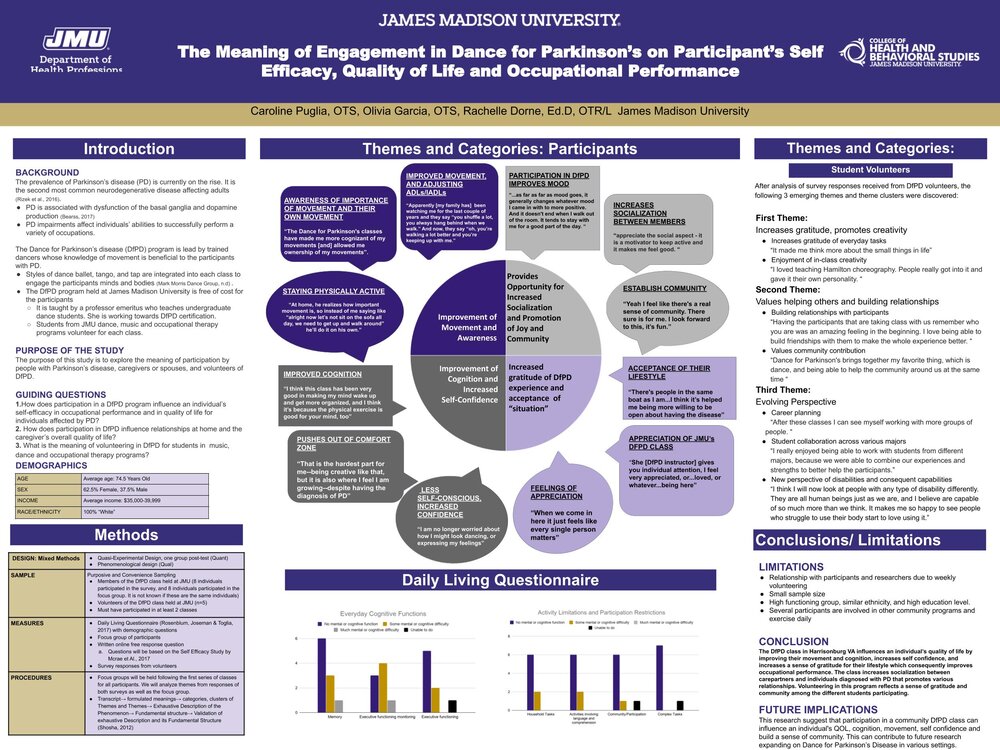The Meaning of Engagement in Dance for Parkinson’s on Participant’s Self Efficacy, Quality of Life and Occupational Performance
Olivia Garcia and Caroline Puglia
Master of Occupational Therapy
Advisor: Rachelle Dorne, Ed.D, OTR/L
The prevalence of Parkinson’s disease (PD) is currently on the rise. At this time, it is the second most common neurodegenerative disease affecting adults. In the state of Virginia alone, over 19,000 people are diagnosed with PD (Living With Parkinson's, 2019). A recent diagnosis of PD drastically alters social participation, performance patterns, and a sense of identity of those with the disorder (Tickle-Degnen et al., 2017). Similarly, the quality of life (QoL) of a caregiver or family member is highly affected by a loved one’s diagnosis of PD (Living With Parkinson's, 2019). The Dance for Parkinson’s Disease® (DfPD) is a specially designed program led by professionally-trained dancers whose knowledge of movement, balance, and rhythm benefits participants with PD. The DfPD program has been shown to help improve participants’ motor performance, balance skills, self-efficacy, and QoL (McRae et al., 2017). The meaning of participation in DfPD for those with PD and their caregivers, and the value of interprofessional collaboration between dance, music, and occupational therapy students have not been investigated. Participants in this study were recruited using purposive sampling from members and student volunteers who attended DfPD classes over a semester through a local university in a rural community. Through a mixed-method convergent design, this research includes a demographic questionnaire and the Daily Living Questionnaire (DLQ) to measure cognitive influences in performance of activities of daily living (for those with PD) (Rosenblum, Josman, & Toglia, 2017), and focus groups of individuals with PD and their caregivers, to understand the experience of their engagement in DfPD and QoL. Survey responses by students volunteers in occupational therapy, music, and dance programs were analyzed. The quantitative and qualitative results will be discussed and compared to better understand the experiences and value of engagement in DfPD for student volunteers, the participants, and their caregivers.

